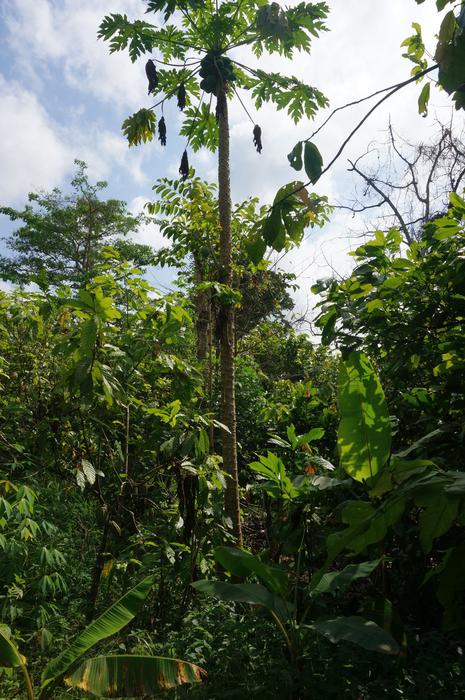Synergistic action on mitigation and adaptation pilot policies to enhance low-carbon resilience of Chinese cities – Nature

Report on the Synergistic Impact of Climate Policies on Urban Resilience and Sustainable Development Goals
Introduction and Alignment with SDGs
This report analyzes the combined effects of climate change mitigation and adaptation strategies on urban resilience, with a direct focus on advancing the Sustainable Development Goals (SDGs). The integration of these strategies is critical for achieving SDG 11 (Sustainable Cities and Communities) and SDG 13 (Climate Action). The study investigates the synergistic impacts of low-carbon and climate-resilient pilot policies, providing insights into how urban centers can effectively pursue sustainable development in the face of climate change.
Methodology
The analysis is based on panel data collected from 286 Chinese cities over the period of 2005–2022. The research evaluates the effectiveness of dual-pilot policies (combining mitigation and adaptation) against single-pilot policies in enhancing low-carbon resilience, a key component of sustainable urban development.
Key Findings and SDG Implications
- Superior Performance of Integrated Policies: Dual-pilot policies that integrate both mitigation and adaptation significantly enhance the low-carbon resilience of cities. This integrated approach is more effective than implementing single-focused policies, demonstrating a clear pathway for cities to accelerate progress on SDG 13.1 by strengthening resilience and adaptive capacity to climate-related hazards.
- Varied Effectiveness Across Urban Contexts: The benefits of these policies are not uniform.
- Cities exposed to extreme weather and high disaster risks show more pronounced improvements in resilience. This finding underscores the importance of targeted interventions to meet SDG 11.5, which aims to reduce the adverse per capita environmental impact of cities and protect the poor and people in vulnerable situations.
- Cities with varying levels of ecological, economic, social, and institutional resilience exhibit different responses, highlighting that policy effectiveness is contingent on local conditions. This aligns with the principle of SDG 10 (Reduced Inequalities), suggesting that tailored strategies are needed to ensure equitable resilience-building across different urban environments.
Factors Influencing Policy Effectiveness
The success of climate policies is significantly mediated by several key factors, each corresponding to specific SDGs:
- Green Technology Innovation: Advances in green technology are critical for enhancing policy effectiveness, directly supporting SDG 9 (Industry, Innovation and Infrastructure) by promoting clean and environmentally sound technologies.
- Human Capital Development: A skilled workforce and knowledgeable populace are essential for implementing and sustaining climate actions. This highlights the role of SDG 4 (Quality Education) in building the capacity needed for a sustainable transition.
- Communication Infrastructure: Robust communication networks facilitate the coordination and implementation of climate policies, contributing to the infrastructure development goals outlined in SDG 9.
Policy Design and Governance for Climate Action
The study emphasizes that effective climate action, central to SDG 13, depends on robust policy design and governance structures. Key elements include:
- Diversity and Integration of Policy Instruments: A mix of regulatory, economic, and informational tools is necessary for comprehensive climate governance.
- Multidimensionality and Synergy of Policy Objectives: Aligning climate goals with broader sustainable development objectives is crucial. This approach supports SDG 16 (Peace, Justice and Strong Institutions) by fostering effective, accountable, and inclusive institutions at all levels and promotes SDG 17 (Partnerships for the Goals) by encouraging policy coherence.
Recommendations for Achieving Sustainable Urban Development
Based on the findings, it is recommended that cities integrate climate change mitigation and adaptation strategies to optimize synergies. This holistic approach is essential for bolstering urban resilience and making substantial progress toward the 2030 Agenda for Sustainable Development, particularly for creating cities that are inclusive, safe, resilient, and sustainable (SDG 11) while taking urgent action to combat climate change and its impacts (SDG 13).
1. Relevant Sustainable Development Goals (SDGs)
SDG 9: Industry, Innovation and Infrastructure
- The article highlights that “green technology innovation” and “communication infrastructure” are critical for improving the effectiveness of climate policies. This directly relates to SDG 9’s focus on building resilient infrastructure and fostering innovation.
SDG 11: Sustainable Cities and Communities
- The core subject of the article is enhancing “urban resilience” in Chinese cities through policy implementation. This aligns perfectly with SDG 11, which aims to make cities and human settlements inclusive, safe, resilient, and sustainable. The study’s focus on cities facing “extreme weather and high disaster risks” further connects to the goal of building urban resilience against climate-related hazards.
SDG 13: Climate Action
- The article explicitly discusses “mitigation and adaptation strategies” to combat climate change, which is the central theme of SDG 13. It analyzes “low-carbon and climate-resilient pilot policies” and recommends integrating both strategies for “effective climate action,” directly addressing the call for urgent action on climate change.
2. Specific SDG Targets Identified
SDG 9: Industry, Innovation and Infrastructure
- Target 9.4: By 2030, upgrade infrastructure and retrofit industries to make them sustainable, with increased resource-use efficiency and greater adoption of clean and environmentally sound technologies. The article’s emphasis on “green technology innovation” as a key factor for policy success supports this target.
- Target 9.c: Significantly increase access to information and communications technology and strive to provide universal and affordable access to the Internet in least developed countries. The mention of “communication infrastructure” as a critical element for enhancing policy effectiveness is directly relevant to this target.
SDG 11: Sustainable Cities and Communities
- Target 11.b: By 2020, substantially increase the number of cities and human settlements adopting and implementing integrated policies and plans towards inclusion, resource efficiency, mitigation and adaptation to climate change, resilience to disasters, and develop and implement, in line with the Sendai Framework for Disaster Risk Reduction 2015–2030, holistic disaster risk management at all levels. The article’s analysis of “dual-pilot policies” that combine mitigation and adaptation strategies to bolster “urban resilience” is a direct example of the integrated policies and plans mentioned in this target.
SDG 13: Climate Action
- Target 13.1: Strengthen resilience and adaptive capacity to climate-related hazards and natural disasters in all countries. The study’s primary finding is that integrated policies “enhance the low-carbon resilience of pilot cities,” especially those subject to “extreme weather and high disaster risks,” which directly addresses the need to strengthen resilience and adaptive capacity.
- Target 13.2: Integrate climate change measures into national policies, strategies and planning. The article evaluates the impact of “low-carbon and climate-resilient pilot policies” in China, which exemplifies the integration of climate change measures into sub-national planning and strategy.
3. Mentioned or Implied Indicators
Indicators for SDG 9
- Rate of green technology innovation: The article implies this as a measurable factor by stating it is “critical to improving policy effectiveness.” This could be measured by the number of green patents or investment in green R&D.
- Development of communication infrastructure: The article identifies this as another critical factor, implying that its quality and accessibility can be measured to assess progress.
Indicators for SDG 11 & 13
- Level of urban low-carbon resilience: The article uses this as a key outcome variable and even categorizes cities based on their “ecological, economic, social and institutional low-carbon resilience.” This composite measure serves as a direct indicator of progress towards urban resilience.
- Effectiveness of integrated climate policies: The study’s methodology is based on measuring the “synergistic impacts” of dual policies versus single policies. The measured enhancement in resilience is an indicator of the successful implementation of integrated climate action plans.
- Human capital development: The article suggests this is a critical factor for policy success. Progress could be measured through metrics like education levels, and the number of skilled professionals in green sectors, which contribute to a city’s adaptive capacity.
4. Summary Table: SDGs, Targets, and Indicators
| SDGs | Targets | Indicators |
|---|---|---|
| SDG 9: Industry, Innovation and Infrastructure |
|
|
| SDG 11: Sustainable Cities and Communities |
|
|
| SDG 13: Climate Action |
|
|
Source: nature.com

What is Your Reaction?
 Like
0
Like
0
 Dislike
0
Dislike
0
 Love
0
Love
0
 Funny
0
Funny
0
 Angry
0
Angry
0
 Sad
0
Sad
0
 Wow
0
Wow
0














































.jpg.webp?itok=0ZsAnae9#)







:focal(1500,1000)/https://media.globalcitizen.org/a6/9a/a69a4720-d8a1-4715-b596-18738d03c05c/rotary_polio_hero_image.jpg?#)

/countries/sri-lanka/photo-credit---dmc-sri-lanka.tmb-1200v.jpg?sfvrsn=dc298bcc_1#)


















